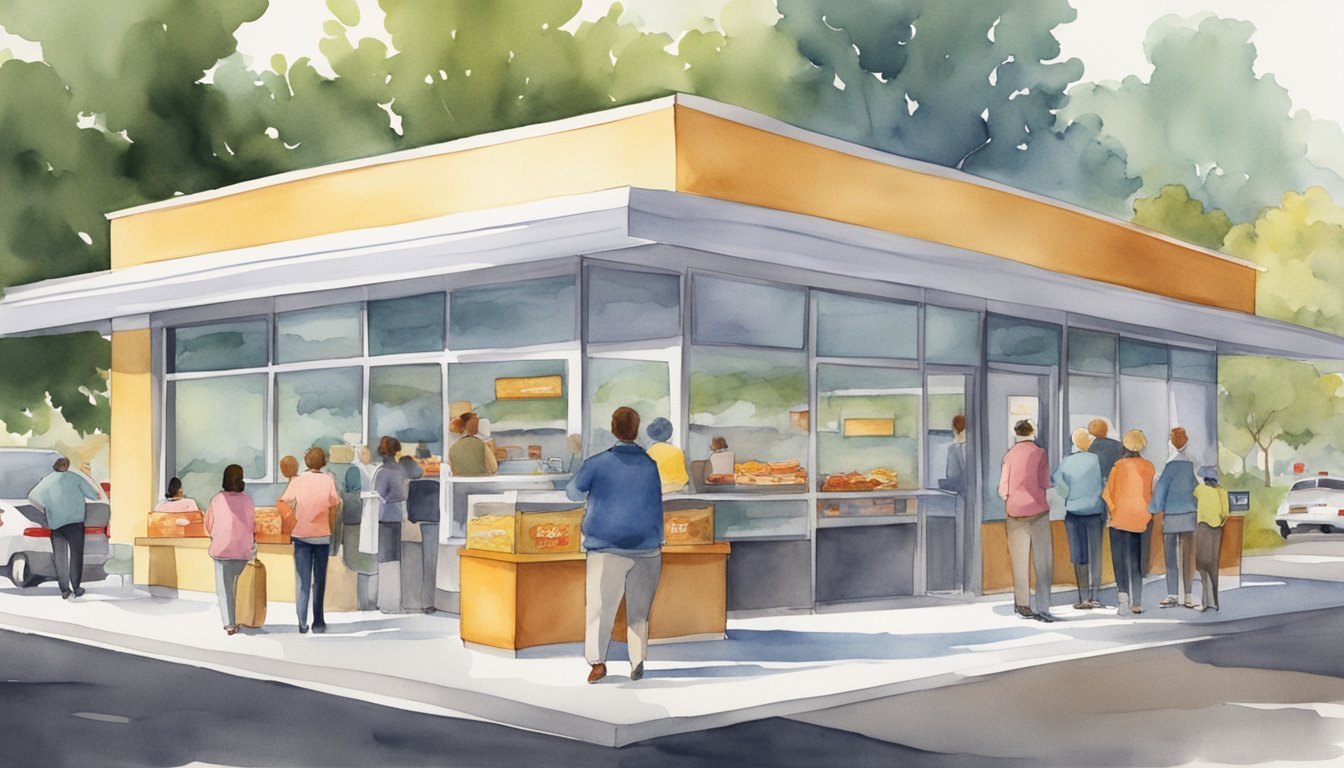Origins and History of Fast Food
Fast food has revolutionized the way people eat worldwide, with its roots deeply planted in American culture. This section delves into the early days of quick service eating establishments and the key historical milestones that shaped the fast food industry as it is known today.
Birth of the First Fast Food Restaurant
The concept of fast food began taking shape at the turn of the 20th century. While Horn and Hardart popularized the Automat in Philadelphia in 1902, serving meals via coin-operated vending machines, it was White Castle that cemented the model of quick-service hamburgers in 1921. These restaurants catered to the fast-paced American lifestyle by offering quick meals at a low cost, and White Castle’s success set the stage for the proliferation of hamburger chains across the United States.
Key Historical Milestones
Significant developments followed the opening of the first fast food restaurant. A&W opened in 1919, pioneering the drive-in restaurant concept. This car-oriented service perfectly complemented America’s burgeoning automobile culture. After World War II, the fast food landscape saw another dramatic transformation with the founding of McDonald’s in San Bernardino, California. The original McDonald’s introduced the Speedee Service System, a method that spectacularly cut down service times by focusing on a limited menu and efficiency.
Fast forward to 1955, and Ray Kroc opened the first McDonald’s franchise in Des Plaines, Illinois, marking the expansion of the fast food industry through franchising. This period also witnessed the spread of fast food culture from Southern California to the rest of the world. The fast food industry continued to grow, becoming the global phenomenon it is today.
Business and Industry Impact

The fast food industry revolutionized not only dining convenience but also the economic and business landscapes. It has paved the way for expansive franchise networks and altered how restaurants connect with culture and economies on a global scale.
Franchise Model and Expansion
The inception of fast food brought about a transformative franchise model, initially popularized by Insta-Burger King in Florida. This franchising move enabled rapid expansion and replication of food service across diverse markets. As a result, restaurants could amplify their sales, spreading nationwide and internationally, as seen with chains like KFC and Subway. Franchise agreements allowed individual franchisees to operate their own outlets, utilizing a recognized brand name and established business model. California, famously hosting the first In-N-Out burger stands, is a testament to how a single restaurant can spark an industry of franchise chains.
Fast-Food Chains and Restaurants
Fast food chains rely on the predictability of their menu, offering identical food preparations, from French fries to fried chicken, irrespective of location. Consistency here is key, ensuring that travelers in Chicago, urban areas of Australia, or stops along Oklahoma highways receive the same product and experience. This industry approach has not only influenced the restaurant chain business model but also the economics of food sales, with fast food giants like McDonald’s and Wendy’s contributing significantly to industry growth. Design elements like drive-through windows, initiated by Jack in the Box, optimized for on-the-go customers and streamlined service.
Cultural and Economic Influence
Fast food has had a profound impact on cultural and economic spheres worldwide. With worldwide icons like McDonald’s Golden Arches and KFC’s Colonel Sanders, fast food chains have become embedded in popular culture and the American Dream narrative. However, nutrition and health have emerged as pressing concerns, influencing menu offerings and public discourse about obesity and trans fats. As detailed in works like Fast Food Nation and documentaries such as “Supersize Me,” the industry’s influence extends far beyond sales figures or the number of stores—it’s about shaping consumer behavior and societal trends. Economic impacts are multifaceted as well, with the National Restaurant Association highlighting the industry’s role in job creation, rural and urban development, and fundamental shifts in food consumption patterns.

